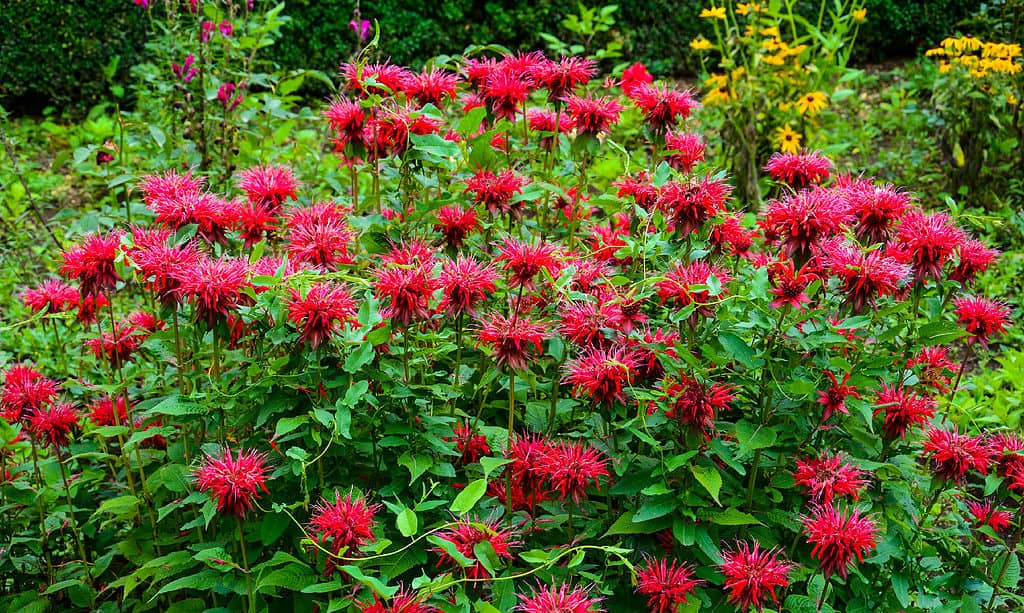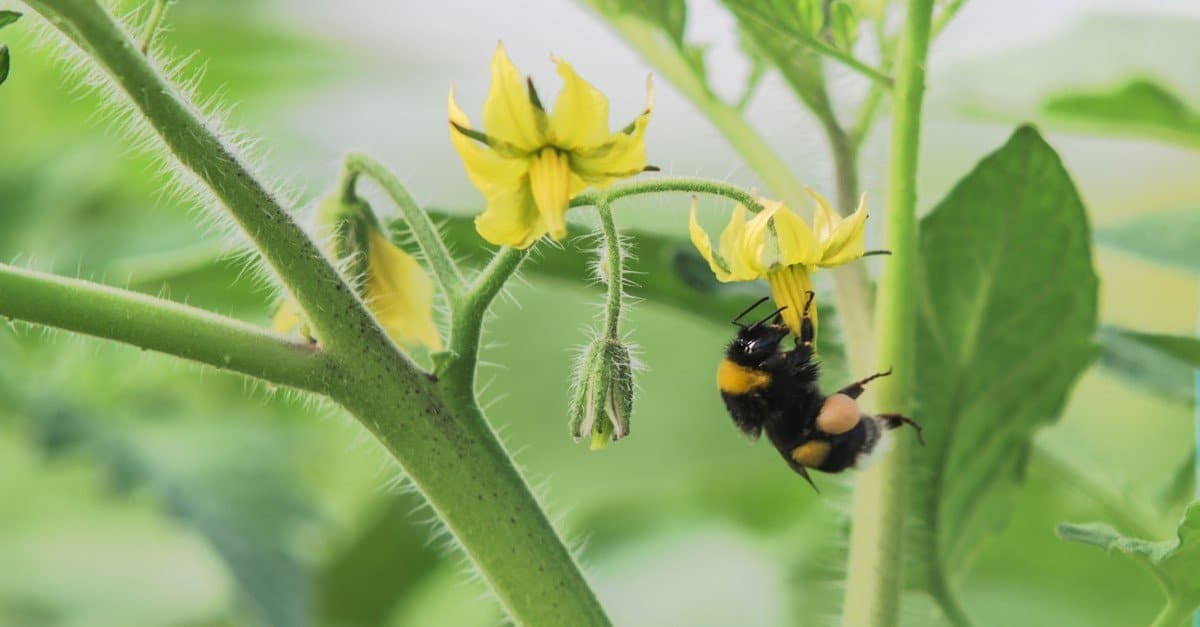It’s probably not just your imagination if your garden seems different in recent years. The typical hum of bees is much quieter, and the air is less vibrant and lively. Worldwide, we’re seeing decreases in vital pollinators. Bee, butterfly, and bat populations are all experiencing worryingly low numbers. The bulk of the fruits and vegetables we consume rely on these (previously) regular visits, so the idea that their numbers are decreasing can be a frightening concept.
No one person can indeed single-handedly rescue agriculture as we know it, cure the fungus that kills bats, restore the monarch butterfly, or stop the decline of the honey bees. However, the average gardener is not helpless in this conservation fight. Pollinators like bees require secure areas to feed and breed as we strive to address the bigger concerns at hand, such as climate change and widespread pesticide usage. Here is where you step in! With a few easy steps, you can transform your yard into an absolute wonderland for bees.
How to Attract Bees to Your Garden: 10 Easy Steps
1. Invest in a Diverse Range of Plants for Your Garden
Growing bee-friendly flowers will ensure that your property is teeming with bees and other pollinators. Thus, you should choose a good choice of varied flowers whether you’re planning a flower bed or a whole wildflower garden.
Pick up plants with a wide variety of colors and shapes. There are an estimated 4,000 distinct kinds of bees in the United States, and they come in a wide range of sizes and tongue lengths. They consume various flower forms as well, so having a diverse assortment of flowers in your yard will draw the greatest variety of bees. As many double or multi-petalled blooms are difficult for many kinds of bees to access, try to choose as many single flowers as you can, such as many basic old cottage garden plants.
Include a nice mixture of native plants and wildflowers as well, as native insects prefer native plants and certain rarer bee species can be supported by wildflowers. Making a wildflower seed bomb, planting wildflower seeds, or, if you have a lot of space, establishing a wildflower meadow are all ways to introduce more wildflowers to your garden. Wildflower seeds are readily accessible at most nurseries and even hardware shops.
2. Opt for Bee-Specific Plants
In addition to planting a diverse garden, it is also very important to plant herbs, flowers, and other plants that are known for being bee magnets. Many additional plants are beneficial to bees, therefore the following list is not all-inclusive. Since the list is intended to be helpful across the United States, specific species have not been listed for each plant. That being said, the following plants will thrive in a range of climates, albeit not all of them will have species in your local area. To locate your native species, use a wildflower guide or get in touch with nearby nurseries. Regardless, the following are a few popular types of flowers that bees love:
- Aster
- Basil
- Bee balm
- Black-eyed Susan
- Currant
- English lavender
- Giant hyssop
- Lupine
- Marjoram
- Purple coneflower
- Rabbitbrush
- Rhododendron
- Rosemary
- Sage
- Stonecrop
- Sunflower
- Willow
- Zinnia

Bee balm (pictured) is an absolute bee magnet that will easily attract bees to your garden. Plus, they’re pretty!
©Vahan Abrahamyan/Shutterstock.com
3. Keep Your Plants in Groups
Plant your flowers in bunches or groups to make your garden a perfect place for pollinators while thinking about strategies to get bees specifically to those plants. Plants that are grown in clusters rather than separately across a backyard will draw bees more than those that are spaced apart. Many people are unaware that bees normally only visit one species of plant on a foraging excursion in search of nectar or pollen.
Therefore, you must establish dense clusters of the same kind of flowers if you wish to draw a lot of bees. Each type of plant should be planted together in a three-foot by three-foot area, and you should rotate these plants throughout the garden. Consider establishing massive shrubs or even flowering trees as well since they will grow a particularly large cluster of a single species on their own.
4. Avoid Using Pesticides of Any Kind
To put it simply, bees and other beneficial insects that may do so much good for your garden and the environment are killed by common insecticides and pesticides. Too frequently, when faced with common pests and illnesses, gardeners’ first impulse is to grab a pesticide product. These products may be effective in many situations, but they are cruel to bees, who are extremely sensitive to these poisons. Even items like insecticidal soap and diatomaceous earth should not be used near bees.
Trying organic methods to combat pests and illnesses is more ecologically friendly. As part of more environmentally friendly gardening techniques, you can utilize pest-repelling predators or produce your DIY insect spray. Neem oil and copper-based sprays can be safe, but they should only be used sparingly.
Consider employing companion planting or other organic or DIY gardening techniques in your backyard. This is a natural approach to ward off pests and can also fight illness and disease among your plants.
5. Stop Weeding So Often
Bees are drawn to weeds! When bees come out of hibernation in the spring, early-blooming flowers like dandelions, clover, and others often referred to as “weeds” provide a vital source of food. Therefore, think about if such plants could be advantageous for bees before using a weedkiller. A few weeds here and there won’t harm your garden, and they could even benefit the bees!
6. Provide Access to Clean Drinking Water
All pollinators, including bees, require access to water. So, offering a protected landing area close to water sources will encourage more bees to visit your garden. These animals require water to control their body temperatures, and installing a bee watering station may provide them with a clean, secure, and convenient location to obtain water. As a result of their inability to swim, bees require a place where they may land and reach water without danger of drowning. Bee watering stations can be made from scratch, but you can buy more aesthetically pleasing ones from a nursery or online.
The addition of stones to a bird bath or lowering the water pressure in a fountain are two fairly easy ways to help them. Pond water is their preferred source of water, but you don’t need to spend a lot of money on a sizable in-ground pond to satisfy them. A half-wine barrel can be transformed into a charming, low-maintenance pond. Just include some mosquito fish, aquatic plants, and a solar-powered aerator. Bees enjoy landing on floating plants because the plants and fish provide them with extra nutrients.
7. Consider Beekeeping in Your Backyard
Even while not everyone is prepared to manage backyard beekeeping, it’s something to think about if you’re serious about mastering the ability to attract bees to your garden. You can buy bee hives online or at your neighborhood hardware shop. All you have to do is wait for the bees to show up once the hive is set up! Backyard beekeeping is a fantastic method to support these vital pollinators while also becoming involved in the local ecology.
8. Let Your Lawn Grow Out a Bit
It might be beneficial to draw bees to your garden by letting go of the concept of a perfect lawn. You may encourage the formation of flower heads and seeds, which are excellent for being able to attract bees, by altering how frequently you mow your grass. Typical yard weeds like dandelions and clover are good bee-attracting plants.
It will be quite advantageous for bees if you do not touch your lawn, or just a portion of it if you can’t bear the thought of abandoning the entire area, and letting the grasses and flowers grow to a height of three inches or higher. The use of popular lawn pesticides and herbicides that may damage bees should also be avoided.

While many homeowners prefer a pristine lawn, it could be very advantageous to let your lawn grow a bit wild, even in small sections.
©iStock.com/Anna Kanishcheva
9. Consider Planting Flowering Vegetables and Fruits, Not Just Herbs and Flowers
Think of growing flowering vegetables or a vegetable garden with produce like tomatoes and zucchini. In this manner, the bees receive the pollen they require while you get the vegetables you want. One of the easiest methods to generate food for yourself and attract bees is by doing this! Remember that most vegetables must be grown in full sunlight, so if you use this strategy to draw bees, be sure to provide them with some cool shade as well.
Planting flowering fruits is another great method to get bees in your yard. Consider growing fruits that flower before they provide fruit, such as strawberries and apples. The bees will receive the pollen they require, and you will receive the fruit you desire. Why not think about some heritage herb types while you’re at it? This is a fantastic method to support the bees and cultivate the herbs you need in a well-rounded food garden.
10. Consider Building a Bee Motel
Bees and other insects can have a place to nest if bee motels are added to your garden. A box can be filled with hollow tubes made of wood, bamboo reeds, or dried flower stalks to create your homemade bee motel. You can also easily purchase fully built bee motels online to save some time.
The ideal habitat for solitary bees is a bee motel, as they don’t reside in hives like honeybees do. To mimic their native environment where they lay eggs in dead wood, solitary bees will build their nests and lay their eggs in the empty spaces of the tubes.
By leaving branches, deadwood, or other debris lying around the yard to serve as a habitat for the bees, you may also sustain a variety of wild bee species in your garden. You can also provide bees with alternatives for nesting or just a place to relax by placing decaying logs, grass heaps, or even mud in areas of your garden.
It’s worth noting that a bee motel is distinct from a bug motel. However, a bug motel’s design might have a special area for bees, depending on how it was built.
These steps on how to attract bees to your garden aren’t that difficult to follow. You also don’t need to follow every step in this guide. Start with a couple of changes, then follow more steps to see your bee population start to thrive!
Summary of How to Attract Bees to Your Garden: 10 Easy Steps
| Step | Instruction |
|---|---|
| 1 | Invest in a Diverse Range of Plants for Your Garden |
| 2 | Opt for Bee-Specific Plants |
| 3 | Keep Your Plants in Groups |
| 4 | Avoid Using Pesticides of Any Kind |
| 5 | Stop Weeding So Often |
| 6 | Provide Access to Clean Drinking Water |
| 7 | Consider Beekeeping in Your Backyard |
| 8 | Let Your Lawn Grow Out a Bit |
| 9 | Consider Planting Flowering Vegetables and Fruits, Not Just Herbs and Flowers |
| 10 | Consider Building a Bee Motel |
Thank you for reading! Have some feedback for us? Contact the AZ Animals editorial team.








